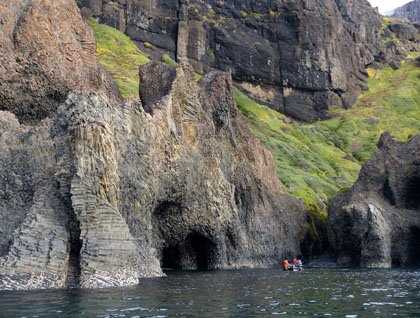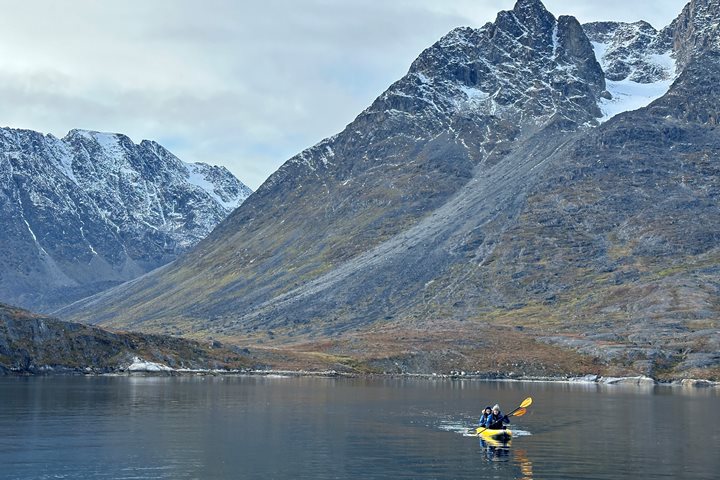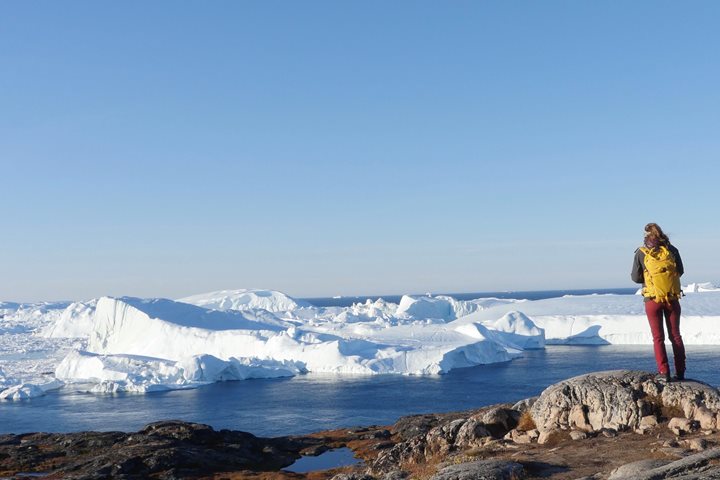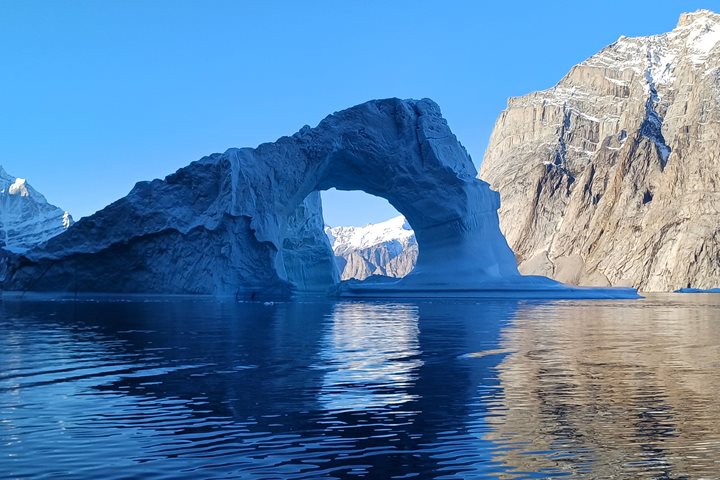For most of our trip in the Canadian Arctic and Greenland, geology (despite the exhortations of Jason Kelley) and vegetation have taken a back seat to wildlife and ice—surely to be admired but an opening act to the polar bears, glaciers, and icebergs that have defined our experience. For most of our trip, we have travelled through almost unimaginably old rocks, laid down in seas far away from our (and their) present location, and often (as yesterday) altered by forces of heat and pressure. We have passed through some of the oldest rocks on Earth, their age measured in billions of years, time that we can scarcely comprehend. Today, more recent geology came to the fore. We have reached Disko Island, the largest island after Greenland, itself. Our activities here were on the water by kayaq (the Greenlandic spelling) or Zodiac. Disko Island was formed as the land that is now Greenland passed over a geological hotspot a mere 60 or so million years ago and not too far from its present location as a part of North America. Molten material (magma) from the Earth's mantle rose up to the surface and cooled to form igneous rock—basalt, but here a special form of basalt. As the material cooled and contracted, it separated into distinct columns of regular size and geometric shape forming mostly pentagonal and hexagonal columns packed regularly together, here seen sheared off in cross section, there packed like, well, cigars in a box. Columnar basalt is found in various spots around the Earth, but here was a most magnificent display of it, eroded by time and the sea into weird and wonderful shapes.
For our afternoon landing, we moved up the coast of Disko Island. Approaching in our Zodiacs, we were struck by the sheer greenness of it. We have left the high Arctic. Here, the ground is covered by a continuous mat of vegetation. Shrubs of willows and dwarf birch reach as high as our knees. After the scattered plants of the high Arctic that struggle to grow in the most favored microsites, this seemed like a veritable Arctic jungle. (Okay—I may be pressing the point.) Many perennial herbs were still in flower and the tundra was taking on the colorful hues of autumn, the bright green of evergreen crowberry contrasting with the yellow of willow, the orange of dwarf birch, and the red leaves of blueberry, all over thick, spongy mats of moss and lichens.
We wandered up a broad valley, where a surprise awaited us. Turning around a last corner we found a waterfall gushing over a rim of more columnar basalt. A few steps more and it was a twin waterfall bringing water from the melt of the first snowfall of autumn on the hills above. Most spectacularly, the twins were connected by a rainbow formed in their spray. Returning to the landing, we found a second surprise: sausages grilled on the beach by our galley staff, washed down with cold brews. Some things just taste best when consumed outdoors!
Could there be more to this wonderful day? There could, and there was. Ice took its rightful place in the fore, as we moved the short distance to Greenland's third largest community of Ilullisat. The air was still, the sea was flat calm, and the sun was descending toward the horizon as our ship maneuvered around and between some immense pieces of ice. They have calved from the glacier that descends from the Greenland icecap and dominates this part of Greenland. These will be the focus of tomorrow's adventures. Stay tuned.







